October 20 - 26, 2013: Issue 133
1933 Wormald Brass Fire Extinguisher
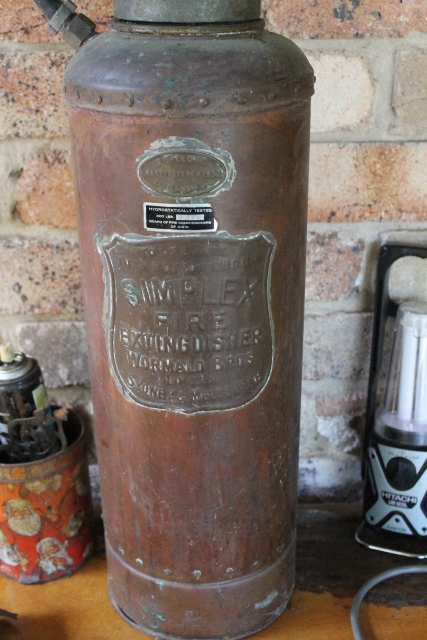 Although this 1933 Wormald Fire Extinguisher will only sell for around
100 to 200 dollars on ebay or elsewhere, its weight in brass and copper, from
which is composed in its entirety, would fetch around 300 dollars from metal
recyclers. In 1933, cited by many as one of the worst years of The Depression in
Australia, these newly manufactured Simplex Fire extinguishers may not have had
much of a market as some were selling for less then half their retail cost or
were being offloaded by people going out of business::
Although this 1933 Wormald Fire Extinguisher will only sell for around
100 to 200 dollars on ebay or elsewhere, its weight in brass and copper, from
which is composed in its entirety, would fetch around 300 dollars from metal
recyclers. In 1933, cited by many as one of the worst years of The Depression in
Australia, these newly manufactured Simplex Fire extinguishers may not have had
much of a market as some were selling for less then half their retail cost or
were being offloaded by people going out of business::
FIRE EXTINGUISHERS (Simplex) for sale tested and charged Half original cost - B3179 WHARINGS 223 George st. Advertising. (1933, December 16). The Sydney Morning Herald(NSW : 1842 - 1954), p. 13. Retrieved from http://nla.gov.au/nla.news-article17033324
FIRE EXTINGUISHERS 10 Simplex Extinguishers for Sale cost £3/10/ each Will accept £1 each Room 23 first floor Vickery s Chambers62 Pitt street Phone B6652_Advertising. (1933, October 19). The Sydney Morning Herald(NSW : 1842 - 1954), p. 9. Retrieved from http://nla.gov.au/nla.news-article17016854
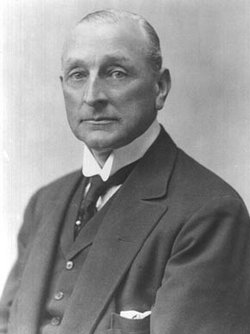 The Wormald Brothers in Australia story began with the eldest brother in
this trio in 1885, when John Wormald (later Sir - right), then of the
Mutual Fire Insurance Corporation (Manchester, England), wrote the first
pamphlet of rules for automatic sprinklers. In 1889, after he had joined forces
with Messrs. Dowson and Taylor, ‘Fire Engineers of the Simplex Extinguisher’,
and appointed his younger brother, Joseph Dawson Wormald, as the Australian
sales agent for the Grinnell sprinkler head which Dowson & Tayor were
marketing through Mather & Platt as suppliers.
The Wormald Brothers in Australia story began with the eldest brother in
this trio in 1885, when John Wormald (later Sir - right), then of the
Mutual Fire Insurance Corporation (Manchester, England), wrote the first
pamphlet of rules for automatic sprinklers. In 1889, after he had joined forces
with Messrs. Dowson and Taylor, ‘Fire Engineers of the Simplex Extinguisher’,
and appointed his younger brother, Joseph Dawson Wormald, as the Australian
sales agent for the Grinnell sprinkler head which Dowson & Tayor were
marketing through Mather & Platt as suppliers.
Along with a partner, Stanley Russell, Joseph Wormald established the business, Russell and Wormald in Australia, which continued operating in this name until 1900. Joined in Australia by another Wormald brother, (Henry) Harry Percy Wormald, they formed the business, Wormald Brothers. It became a limited company in 1911 and a public listed company in 1949. It became known as Wormald International and later went on to absorb Mather & Platt Ltd. itself. John Wormald last visited Australia in 1932, the year before he died.
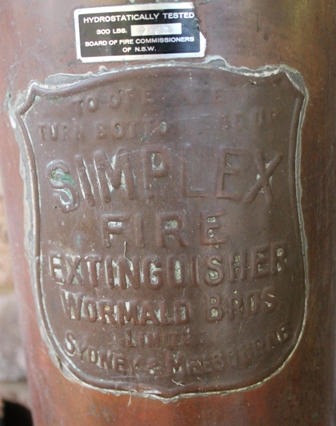 Some sources state that in 1788 John Carey an Englishman had experimented
with a heat-operated device for discharging water through a system of pipes to
extinguish a fire and had developed his ideas by 1806 into a workable model. In
1809 Lieutenant-General Sir William Congreve invented another perforated pipe
system and three years later, a valve sealed by a fusible solder, whilst in 1864
Major Stewart Harrison of the 1st Engineer (London) Volunteers, gave the world
the first Automatic Sprinkler Head. In 1874 Henry S. Parmelee, a piano
manufacturer of New England, America, placed an automatic sprinkler on the
market, and finally Frederick Grinnell, another American and his brother, the
head of the Providence Gas, Steam and Water Pipe Company, patented the first
reliable and commercially successful automatic sprinkler head in
1882.
Some sources state that in 1788 John Carey an Englishman had experimented
with a heat-operated device for discharging water through a system of pipes to
extinguish a fire and had developed his ideas by 1806 into a workable model. In
1809 Lieutenant-General Sir William Congreve invented another perforated pipe
system and three years later, a valve sealed by a fusible solder, whilst in 1864
Major Stewart Harrison of the 1st Engineer (London) Volunteers, gave the world
the first Automatic Sprinkler Head. In 1874 Henry S. Parmelee, a piano
manufacturer of New England, America, placed an automatic sprinkler on the
market, and finally Frederick Grinnell, another American and his brother, the
head of the Providence Gas, Steam and Water Pipe Company, patented the first
reliable and commercially successful automatic sprinkler head in
1882.
As Insurance companies were the originators of many of our Fire Brigades both here and in England, communicating to these how vital such a system could be was imperative and Frederick Grinnell travelled to Manchester in 1881, demonstrating the Automatic Sprinkler and Fire Alarm System at Bolton. The device for extinguishing a fire in its early stages by the use of water and, simultaneously sounded an alarm to summon such human aid as may be required to turn off the water after the sprinkler equipment has performed its task of extinguishing the fire was a huge step forward for factories of all kinds.
In 1883 William Mather visited the United States of America to investigate American methods of technical education and in the course of his travels met Frederick Grinnell, who had just patented his new "Grinnell" automatic sprinkler head. Apparently Mr. Grinnell was amazed and delighted that an Englishman should give his time and pay his own expenses to travel in search of knowledge for the benefit of his country, without a hope of personal reward, and offered William Mather the sole selling rights for the “Grinnell” sprinkler for the whole of the world excepting the territories of the United States of America and Canada. The offer was accepted and Mather & Platt thus had their first ‘baptism’ in the business of fire engineering. At the same time two young men, Ralph Dowson and John Taylor started a partnership in the fire Engineering business. These two young men worked together for the Chemical Fire Engineering Company of Bolton, and had, in the early days of their partnership, designed and placed on the market the first two-gallon “Simplex” Soda-Acid Fire Extinguisher which was very similar in basic principles as hand appliances in use today.
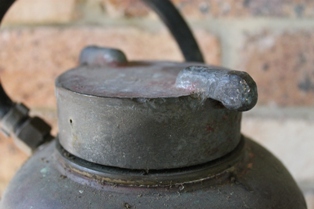 The first fire extinguisher of which there is any record was patented in
England in 1723 by Ambrose Godfrey, a celebrated chemist at that time. It
consisted of a cask of fire-extinguishing liquid containing a pewter chamber of
gunpowder. This was connected with a system of fuses which were ignited,
exploding the gunpowder and scattering the solution. This device was probably
used to a limited extent, as Bradley's Weekly Messenger for November 7th, 1729,
refers to its efficiency in stopping a fire in London.
The first fire extinguisher of which there is any record was patented in
England in 1723 by Ambrose Godfrey, a celebrated chemist at that time. It
consisted of a cask of fire-extinguishing liquid containing a pewter chamber of
gunpowder. This was connected with a system of fuses which were ignited,
exploding the gunpowder and scattering the solution. This device was probably
used to a limited extent, as Bradley's Weekly Messenger for November 7th, 1729,
refers to its efficiency in stopping a fire in London.
The modern fire extinguisher was invented by British Captain George William Manby in 1818; it consisted of a copper vessel of 3 gallons (13.6 liters) of pearl ash (potassium carbonate) solution contained within compressed air.
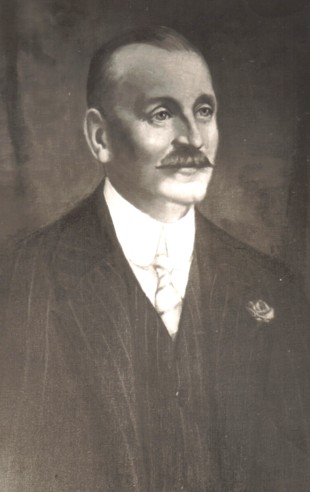 Joseph Dawson Wormald (right) arrived in Australia in 1889,
entering into partnership with Stanley Russell to manufacture and import fire
appliances. Living alternately in Sydney and Melbourne, the partners operated an
agency from the Manchester engineering firm of Mather & Platt Ltd for the
Grinnell sprinkler and Simplex fire extinguishers and fire door, as well as for
the Palatine Insurance Co. Ltd of Manchester. Russell retired in
1896.
Joseph Dawson Wormald (right) arrived in Australia in 1889,
entering into partnership with Stanley Russell to manufacture and import fire
appliances. Living alternately in Sydney and Melbourne, the partners operated an
agency from the Manchester engineering firm of Mather & Platt Ltd for the
Grinnell sprinkler and Simplex fire extinguishers and fire door, as well as for
the Palatine Insurance Co. Ltd of Manchester. Russell retired in
1896.
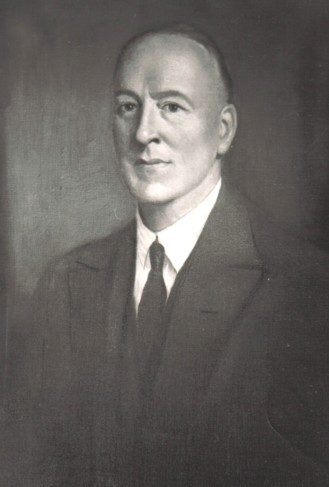 Harry Percy Wormald (left) joined Dowson, Taylor & Co. in
1888, (later Mather & Platt Ltd). He reached Sydney in 1890 and in 1891-98
was accountant cashier for the Scottish Union & National Insurance Co. In
1898 he became sub-manager for Russell & Wormald and in 1900 was admitted
into partnership when the name was changed to Wormald Bros.
Harry Percy Wormald (left) joined Dowson, Taylor & Co. in
1888, (later Mather & Platt Ltd). He reached Sydney in 1890 and in 1891-98
was accountant cashier for the Scottish Union & National Insurance Co. In
1898 he became sub-manager for Russell & Wormald and in 1900 was admitted
into partnership when the name was changed to Wormald Bros.
By 1907, with its factory and store at 7 Deans Place and its office at 17 Bond Street, Sydney, Wormald Bros had agents throughout Australasia. With engineer W. E. L. Wears, in 1909 the brothers set up Embosteel Ltd to manufacture steel ceilings and embossed metal fittings, but within four years sold to Wunderlich Ltd. On 21 December 1910 Wormald Bros Ltd was registered with a nominal capital of £25,000 in £1 shares. The original works to make Simplex equipment were moved to Surry Hills and then in 1912 to Young Street, Waterloo, where rolling shutters and hollow metal windows were made in 1913 and steel shelving three years later. In 1916 a branch was opened in Brisbane and in 1919 a factory was set up in Bay Street, Port Melbourne. (1.)
No. 14,809. APPLICANT:— Joseph Dawson Wormald, Sydney. LAND:— City of Sydney, 11 3/4 perches. In Little Albion street. Surry Hills, part Block E 14, Riley Estate, and part 105 acres granted to Joseph Foveanx; adjoining property of S. R. Wilshire. Advertising. (1907, September 14). Evening News (Sydney, NSW : 1869 - 1931), p. 7. Retrieved from http://nla.gov.au/nla.news-article112639615
A Few insights into the Early Years of what this family gave to Australia:
A FIRE EXTINGUISHER. At the invitation of Messrs. Wormald Brothers and Wears, fire protection engineers, and with the permission of George P. Harris and Searle, & Co., limited, a large gathering of merchants, insurance managers, and architects, including Sir. Booker(Superintendent of the Fire Brigade), visited the warehouse, Gawler place, on Wednesday, to witness a practical test of fire extinction, by the ‘Grinnell Sprinkler and Automatic Fire Alarm.' Briefly, the system of installation consists in a 6-in. water supply being brought in from the main, and reticulated throughout the premises under certain rules laid down by the fire underwriters. The reticulation pipes are distributed along the ceilings, and at intervals of from 8 to 10 feet, are fixed the sprinklets, such spacing providing for the protection of not more than 100 square ft. of floor area. The ascending heat from such a cause as fire, immediately the temperature has reached 133 deg. Fahr., causes the fusable valve to open, and discharge water sufficient to extinguish a fire its incipient stages. The opening action of the sprinkler, by a mechanical contrivance at the heart of the installation, causes an alarm to be sounded, and the call summons the fire brigade to complete the work of extinction, should the fire not have been actually put out. Messrs. Harris, Scarie’s instillation is the sixty ninth erected in Australasia, and this number is protecting upwards of £4,090,000 of insurances. To date the Australasian record consists of 34 fires, and the total loss and the damage caused in connection with £2,750, 000 of insurances is under £1,500. according to the claims paid. To demonstrate the working under actual conditions of fire, Mr. Wears arranged Wednesday’s test in the cart way leading from Rundle street to the packing and delivery yard of the firms premises. A large fire was lit and in 1 min 20 seconds the alarm sounded. In 10 min. from the time of starting the fire all danger was over. Those who witnessed the test were well satisfied with the efficiency of the system and its safety. A FIRE EXTINGUISHER. (1904, December 22). The Register(Adelaide, SA : 1901 - 1929), p. 7. Retrieved from http://nla.gov.au/nla.news-article56578635
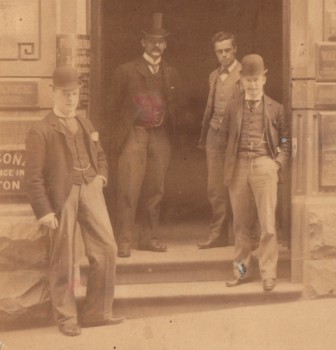 A SIMPLE FIRE EXTINGUISHER. When an outbreak of fire occurs
in a building the first impulse is to alarm the local fire brigade (if there is
one) and then wait impatiently for its arrival. Frequently by that time the
fire may have assumed such proportions that ere it is extinguished considerable
damage has been done through fire and water, and too often indeed to property
that cannot be replaced. Messrs. Wormald Bros., of Bond-street, Sydney.,
have a simple invention — the Simplex Fire Extinguisher — which should fill the
great demand for cheap, reliable, and. simple protection against fire. We have
witnessed a test of their Simplex Fire Extinguisher, and were both surprised and
pleased with the result. The chemical contents are most deadly to fire, and,
seeing that this small apparatus is able to throw the fluid 40 to 50 feet, we
consider it one of the necessary requisites in dwelling houses, factories, etc.,
where life and property are endangered. It is manufactured solely by
Australian workmen with Australian material, and undergoes a severe
hydraulic test before leaving the works. A SIMPLE FIRE EXTINGUISHER.
(1906, March 17). Freeman's
Journal (Sydney, NSW : 1850 - 1932), p. 14.
Retrieved from http://nla.gov.au/nla.news-article119940135
A SIMPLE FIRE EXTINGUISHER. When an outbreak of fire occurs
in a building the first impulse is to alarm the local fire brigade (if there is
one) and then wait impatiently for its arrival. Frequently by that time the
fire may have assumed such proportions that ere it is extinguished considerable
damage has been done through fire and water, and too often indeed to property
that cannot be replaced. Messrs. Wormald Bros., of Bond-street, Sydney.,
have a simple invention — the Simplex Fire Extinguisher — which should fill the
great demand for cheap, reliable, and. simple protection against fire. We have
witnessed a test of their Simplex Fire Extinguisher, and were both surprised and
pleased with the result. The chemical contents are most deadly to fire, and,
seeing that this small apparatus is able to throw the fluid 40 to 50 feet, we
consider it one of the necessary requisites in dwelling houses, factories, etc.,
where life and property are endangered. It is manufactured solely by
Australian workmen with Australian material, and undergoes a severe
hydraulic test before leaving the works. A SIMPLE FIRE EXTINGUISHER.
(1906, March 17). Freeman's
Journal (Sydney, NSW : 1850 - 1932), p. 14.
Retrieved from http://nla.gov.au/nla.news-article119940135
Right: Two of the three Wormald Brothers at Bond Street in Sydney. From left to right: Harry Percy Wormald; Joseph Dawson Wormald. The other two unknown
PROVIDING AGAINST FIRE. In view of the destruction by fire of Villa Maria Convent-school and the narrow escape of the inmates, we are requested to again draw attention to the value of the, Simplex Chemical Fire Extinguisher, a most effective, easily-handled, and economical guard against the development of fires in such circumstances. The 'Simplex' is a machine made expressly for household protection. Its utmost simplicity and wonderful effectiveness, combined with the fact that it can be easily manipulated, by a woman or child, renders its aid invaluable, and points plainly to the truth, that no house should be without its protection. This is the machine that is used by all the Fire Brigades throughout Australia, the officers all speaking highly of its capabilities. The price of each machine ready charged for use is but 65s. The manufacturers and proprietors are Messrs. Wormald Brothers, 17 Bond-street, Sydney, with representatives in Melbourne, Queensland, South Australia, Westralia, Tasmania, and New Zealand. PROVIDING AGAINST FIRE. (1907, April 25). Freeman's Journal (Sydney, NSW : 1850 - 1932), p. 25. Retrieved from http://nla.gov.au/nla.news-article111279678
SIMPLEX FIRE EXTINGUISHER. FIRE risk in a city is an ever present one, but, although the risk is great, modern methods of fire fighting have reduced the destruction entailed to a minimum, but in country districts, where often it is a matter of hours before fire-fighting appliances can be made available, the risk and terror of fire is far greater. Home |is the man's or woman's cherished possession, which, once destroyed, can never be replaced. Without warning, without pity, fire destroys homes every day. All fires are small fires first. In the first vital five minutes, one person alone can fight and quell it, provided there is on hand a Simplex chemical fire extinguisher, the most efficient first-aid fire-fighter forthe home. It is simple to operate, convenient to handle, and, being made of solid polished copper, is ornamental. There is no upkeep cost, as the chemical charge is good practically all the time. The price is £4/7/6,delivered in the city area or on rail. Chemical recharges free after use in fire. Messrs. Wormald Bros., Ltd., are making a special display of these fire-fighters at Stalls 38, 39, Hordern Pavilion, and all country visitors should make a point of inspection. SIMPLEX FIRE EXTINGUISHER. (1925, April 3). Country Life Stock & Station Journal (Sydney, NSW : 1924 - 1925), p. 6. Retrieved from http://nla.gov.au/nla.news-article128646989
Wormald is still going strong today at: http://www.wormald.com.au/
References:
1. G. P. Walsh, 'Wormald, Joseph Dawson (1863–1921)', Australian Dictionary of Biography, National Centre of Biography, Australian National University, http://adb.anu.edu.au/biography/wormald-joseph-dawson-9190/text16231
Fire extinguisher. (2013, October 9). In Wikipedia, The Free Encyclopedia. Retrieved from http://en.wikipedia.org/w/index.php?title=Fire_extinguisher&oldid=576446825
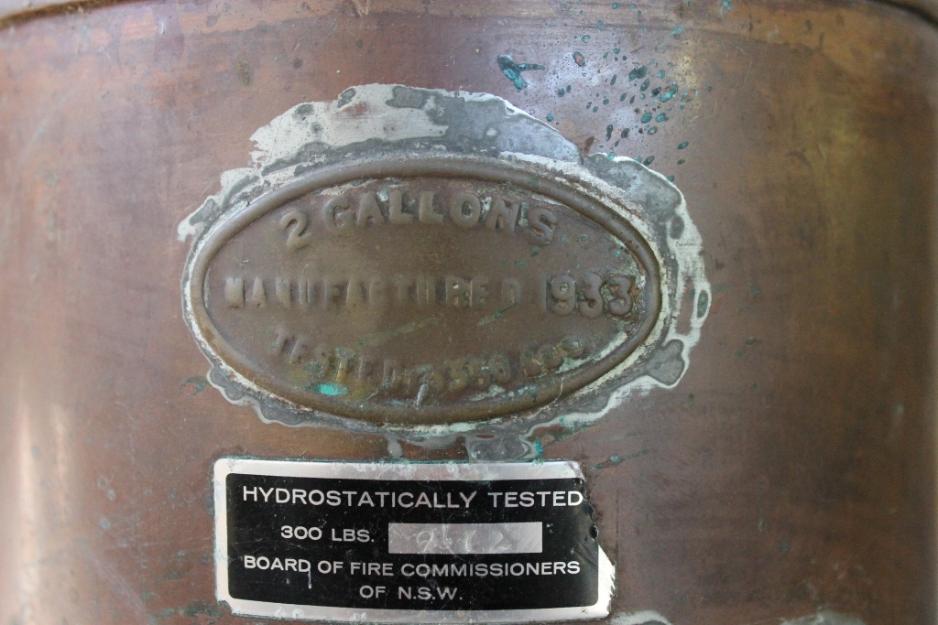
Incidentals: - Fire Fighters and Firefighting in Sydney - the Early Years
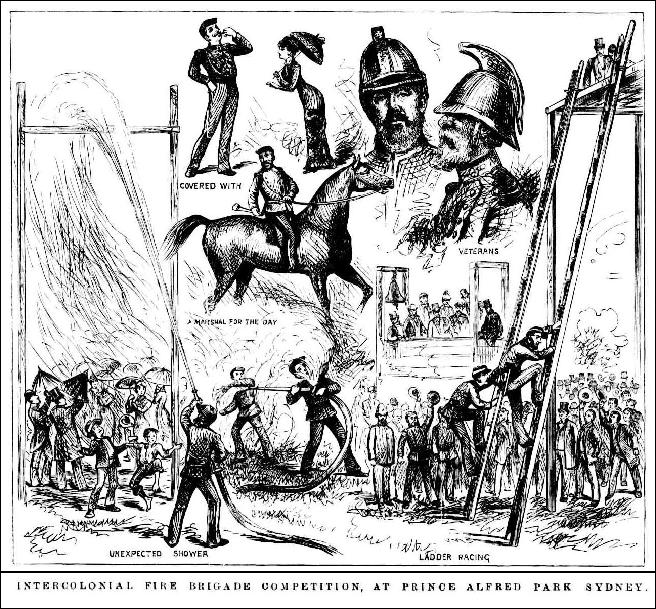
INTERCOLONIAL FIRE BRIGADE COMPETITION, AT PRINCE ALFRED PARKSYDNEY. INTERCOLONIAL FIRE BRIGADE COMPETITION, AT PRINCE ALFRED PARK SYDNEY. (1881, November 26). Illustrated Sydney News (NSW : 1853 - 1872), p. 13. Retrieved from http://nla.gov.au/nla.news-article64974809
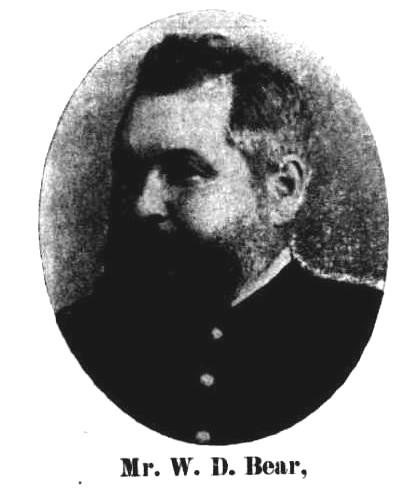 Mr. W. D. Bear, WHO
RESIGNED FROM THE COMMAND OF THE SYDNEY
METROPOLITAN FIRE BRIGADE ON SEPTEMBER 26.
Mr. W. D. Bear, WHO
RESIGNED FROM THE COMMAND OF THE SYDNEY
METROPOLITAN FIRE BRIGADE ON SEPTEMBER 26.
Mr.. Bear-.has had charge of the fire brigades of Sydney since July, 1884, when he arrived from London to take charge of the fire stations. The headquarters were then in Bathurst-street. During that period Mr. Bear did much on behalf of the M.F.B., and to him chiefly is : due the credit of the high standard of efficiency of the brigade. Acting on the principle of fire, prevention being the main factor in fire extinction, and being imbued with enthusiasm in his work, backed by experience gained from practical training, Mr. Bear introduced many improvements in the station arrangements. 'The most important of these is the telephone; system, the lines communicating with all the police stations, theatres, hospitals, wharves, private firms, and with alarm boxes throughout the city. Mr. Bear for many years was an engineer in the London brigade. In a letter he received from the Chief Secretary, references were made to his ability and great services. Mr. W. D. Bear, WHO RESIGNED FROM THE COMMAND OF THE SYDNEY METROPOLITAN FIRE BRIGADE ON SEPTEMBER 26. (1898, October 8). Australian Town and Country Journal (NSW : 1870 - 1907), p. 32. Retrieved from http://nla.gov.au/nla.news-article71318879
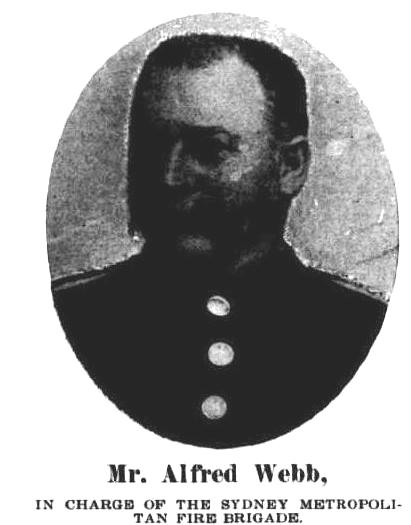 Mr. Alfred Webb, IN CHARGE OF THE SYDNEY
METROPOLITAN FIRE BRIGADE.
Mr. Alfred Webb, IN CHARGE OF THE SYDNEY
METROPOLITAN FIRE BRIGADE.
Mr. Alfred Webb, who has been in charge of the Sydney Metropolitan Fire Brigade for five months, served in the London brigade, which he joined in September, 1868. Except for about four years. Mr. Webb remained under Captain Shaw until1888, when he resigned to take the position of second officer here. He was closely associated with the chief of the London brigade for many years, and on his departure was the recipient of a handsome testimonial from Captain Shaw. Mr. Webb performed special duties in England, and. After the scare created by the disastrous fire in a Vienna theatre he was appointed to inspect the London theatres. Among the large fires which he attended were what are known as the Wood's-street conflagration in 1882 and three outbreaks at-"Whiteley's”. Mr. Webb assisted Captain Shaw in compiling some of his publications. He joined .the Sydney brigade in June, 1898, and was in command previously for about three months during Mr. Bear's visit to America. His connection with fire brigades has extended over twenty-six years. Mr. Alfred Webb, IN CHARGE OF THE SYDNEY METROPOLITAN FIRE BRIGADE. (1898, October 8). Australian Town and Country Journal (NSW : 1870 - 1907), p. 32. Retrieved from http://nla.gov.au/nla.news-article71318872
___________________________________________
Fire Brigade Demonstration. EXHIBITION Of NEW PLANT IN SYDNEY. (See illustrations on this page.) Between 5000 and 6000 people assembled at the junction of Moore and Castlereagh streets on night of April 18 to witness an exhibition of the working of the new steam engine and the extension ladder imported for, the Metropolitan Fire Brigade. The " steamer," said to be the largest in the world, took about 2minto cover the distance between the fire station and Moore-street, and was placed in position
,%20Saturday%2028%20April%201894,%20page%2025.jpg?timestamp=1381485339466) Right: A New Extension Fire Ladder.
Right: A New Extension Fire Ladder.
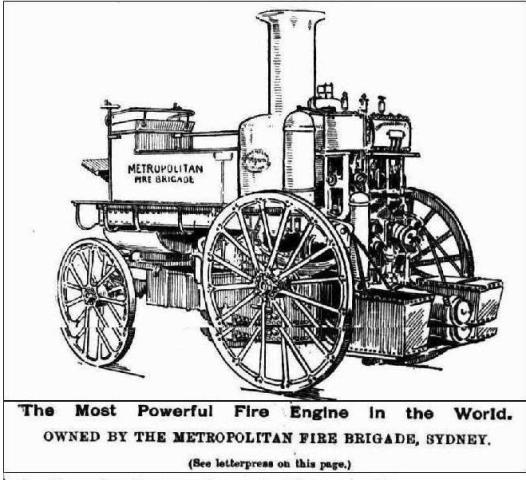
The Most Powerful Fire .Engine in the World. OWNED BY THE METROPOLITAN FIREBRIGADE, SYDNEY.
on the elevated portion of Moore-street, Superintendent Bear with Deputy-superintendent Webb' directing operations. The firemen were not a little hampered at first by the great mass of spectators crowding upon them, but , what their efforts, coupled with those of the police, failed to do, the "steamer" soon accomplished when Engineer " M'Knight had his, hose connected up to the four - deliveries and as many great streams of water rushed into the air in the direction of Pitt-street from ¾ in nozzles. Soon there was a general stampede, and in less time than it takes to write it the street was cleared. A breeching piece was employed in each of the four branches thus allowing eight jets of water to be thrown from fin nozzles, the delivery being at the rate of llOO gal a minute. Then the large delivery alone was used, and a stream of water issuing from a 1 ¾ inch nozzle was thrown almost into Pitt street at the rate of 1300 gallons a minute. The lattice-girder ladders were next exhibited. These were raised from a horizontal position on the oar, and the third ladder reached a height of 80ft. The firemen to the. number of 14also took up their position on the machine, and at various altitudes on the ladder. Three lines of hose were next hoisted, being used at 56ft, 48ft, and 40ft respectively, with l ¼ in nozzles. As a sort of grand finale two streams of water were got to work from one of the small "steamers" present, and these, together with the eighty streams playing from the large "steamer," made a most effective sight, and furnished some idea of the power that could be brought to bear to check-mate any possible efforts of incendiaries. The various exhibitions were heartily applauded by the spectators. Fire Brigade Demonstration. (1894, April 28). Australian Town and Country Journal (NSW : 1870 - 1907), p. 25. Retrieved from http://nla.gov.au/nla.news-article71213110
New York and Sydney. THEIR FIRE EXTINGUISHING APPLIANCES. (See illustrations on pages 494 and 495 )
Among the events of the early part of the centenary year, 1888, the opening of the central station of the Metropolitan Fire Brigade of Sydney is worthy of note. Organised means of fighting fires are among the inventions of modern times. In Sydney no special system was adopted during the first half of the first century. The first fire brigade established in Sydney was the Insurance Fire Brigade, which was started in 1850, principally through the exertions of the late Mr. T. J. Bown. About two years later the volunteer system was started by Mr. A. Torning, and spread rapidly, so that quite a number of independent brigades was established in the city and suburbs. There can be no doubt that we owe much to and the men who devoted a considerable portion of their time to endeavoring to sate life and property from the flames are worthy of all praise. As the number of volunteer brigades increased, however, the want of some controlling power to prevent conflicts induced by a too zealous desire to be foremost became painfully apparent ; and this led in time to the passing of the Fire Brigades Act of 1884, under which the present is organised. Mr. William Douglas as Bear, whose portrait appears in this issue, was appointed to the position of Superintendent. He was born in Woolwich (England), on April 5, 1849, and was educated in a private school there. At 14 years of age he went into tho Royal Navy, and served five years, but, becoming tired of the sea, he joined tho Metropolitan Fire Brigade, London, on January 4, 1869,and in June of that year was Specially commended for saving life with a fire-escape in Tottenham Court road. He remained in the brigade for fifteen years and four months, and gradually worked his way up to the position of an officer under Captain Shaw, through whose recommendation he obtained his present appointment of Superintendent of the Sydney Metropolitan Fire Brigade. Mr. Bear left London for Sydney on April 26, 1884, and in the July following was awarded a bronze medal by the London Metropolitan Board of Works for long service and good service. The medal was forwarded to Sydney by Captain Shaw, through the Agent-General (Sir Saul Samuel), and duly received. On his arrival in Sydney his first care was to disorganise the paid brigade (of which Mr. Bown was captain), and to assist the Fire Brigade Board in framing rules for the guidance of the volunteer companies; so that the whole might work in harmony.
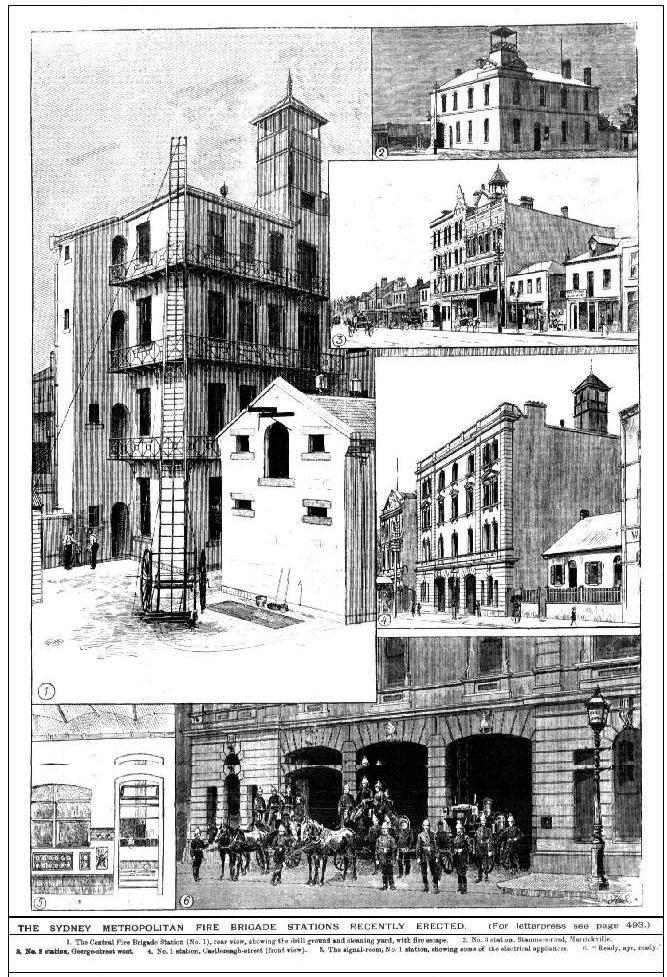
1. The Central Fire Brigado Station (No. 1), rear view, showing the drill ground and deaning yard, with fire escape. 2. No. 3 Station, Stanmore-road, Marrickville. 8. No. 2 station, George-Street west. .4. No. 1 Station, Castlereagh-street (front view).
On May 29,1886, NO. 3 STATION, situated on the highest ground in the neighborhood, at the corner of the Stanmore Road and Albert-street, Marrickville, was opened. The building is of two storeys, with a look-out towe r, and contains a manual engine and one horse, and four married men ; the officer in command being Mr. J. Sneleon, The cost, including the purchase of the ground, was £ 63500.
On August 9, 1886, NO. 2 STATION, in George-street west, was opened. This is-a fine building of four storeys, with a look-out tower 70ft above the footpath. It contains two steam fire engines and one manual, two horses, and five married and two single men (under the command of Mr. E. Ashdown), a ladder, track, and other necessary apparatus. The cost of the ground and building was about £ 610,400.
THE NEW HEAD QUARTERS, OR NO. 1 STATION, in Castlereagh-street, Sydney, next to the Royal Standard Theatre, and opposite to the Protestant Hall, is the finest building of the kind in Australia. The allotment on which it stands has a frontage of 88ft, by a depth of 120ft, and cost £10,3110. The building has a frontage of 75ft, and a right-of-way at the aide. It is 60ft high, and is built of red brick, with cement piers; the middle portion containing the three doors of the engine-room is, however, built of Pyrmont stone, with a fine carving of the head of the Queen on the centre keystone, and carvings emblematic of the fireman's calling on the other two key-stones. The following
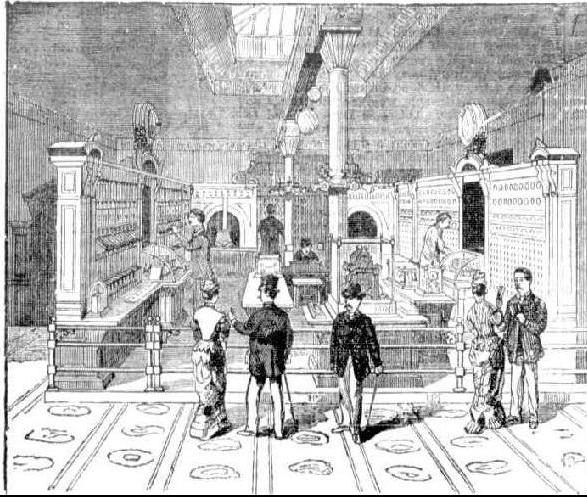 OFFICIAL DESCRIPTION of the building has been furnished
to us :
OFFICIAL DESCRIPTION of the building has been furnished
to us :
The depth of the main building, with the two sidewings and with stables for the accommodation of five Horses, attached to the middle of the main building, is about 68ft. The ground floor on the north side consists of a watchroom about 15ft to 27ft, where the duty men are on watch, and always ready to turn out with the first engine ordered. In this room the whole of the telephones, telephone exchange board, and alarm, and electrical apparatus are worked.
Right: The signal-room, No. 1 station, Showing some of the electrical appliances.
The electrical general contact in this room, when pulled, rings the whole of the house bolls throughout the building, turns up the gas lull in the engine room, stables, drill ground, staircase, and passages, releases the stable doors (which immediately fly open by means of springs), and also releases a weight situated in the single men's bedrooms on the first floor, which opens two flaps of the floor to enable the men to slide down a pole. This pole is hung from the joists in a corner of their bedrooms and the men descend on it into the engine-room alongside of the engines. Speaking tubes reticulate from this room to the whole of the superintendent's apartments, which are situated on the first floor, north and the whole of the principal foreman's quarters, which are on the second floor; to the tower, and the superintendent's offices.
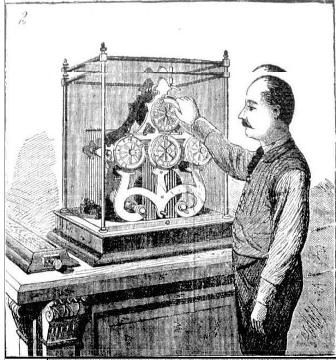 In the rear of the watchmen and staircase is a
recreation-room for the men, about 16ft x 24ft, which will contain a billiard
table, and all necessary amusements for men when off duty. At the southern end
of the building are the offices of the superintendent and secretary of the
board, and the single men's messroom and kitchen. In the centra of the building,
between tho watchroom and office, is the engine-room, which has a clear span,
without columns, of 37ft, and a depth of 31ft, for the accommodation of two
steam fire engines and one manual engine. Directly in the rear of this room,
with the doors faning into the engine-room, are the stables, which enable the
horses to be hitched up to either of tho three engiues quickly. Between the
stables and tho single men's messroom is another small engine-room, which can be
entered from either the main engine-room or tho drill ground, and which is used
for …
In the rear of the watchmen and staircase is a
recreation-room for the men, about 16ft x 24ft, which will contain a billiard
table, and all necessary amusements for men when off duty. At the southern end
of the building are the offices of the superintendent and secretary of the
board, and the single men's messroom and kitchen. In the centra of the building,
between tho watchroom and office, is the engine-room, which has a clear span,
without columns, of 37ft, and a depth of 31ft, for the accommodation of two
steam fire engines and one manual engine. Directly in the rear of this room,
with the doors faning into the engine-room, are the stables, which enable the
horses to be hitched up to either of tho three engiues quickly. Between the
stables and tho single men's messroom is another small engine-room, which can be
entered from either the main engine-room or tho drill ground, and which is used
for …
Left: T6. " Ready, aye, ready."
THE SYDNEY METROPOLITAN FIRE BRIGADESTATIONS RECENTLY ERECTED. (For letterpress see page 493.)New York and Sydney. (1888, March 10). Australian Town and Country Journal (NSW : 1870 - 1907), p. 25. Retrieved from http://nla.gov.au/nla.news-article71095243
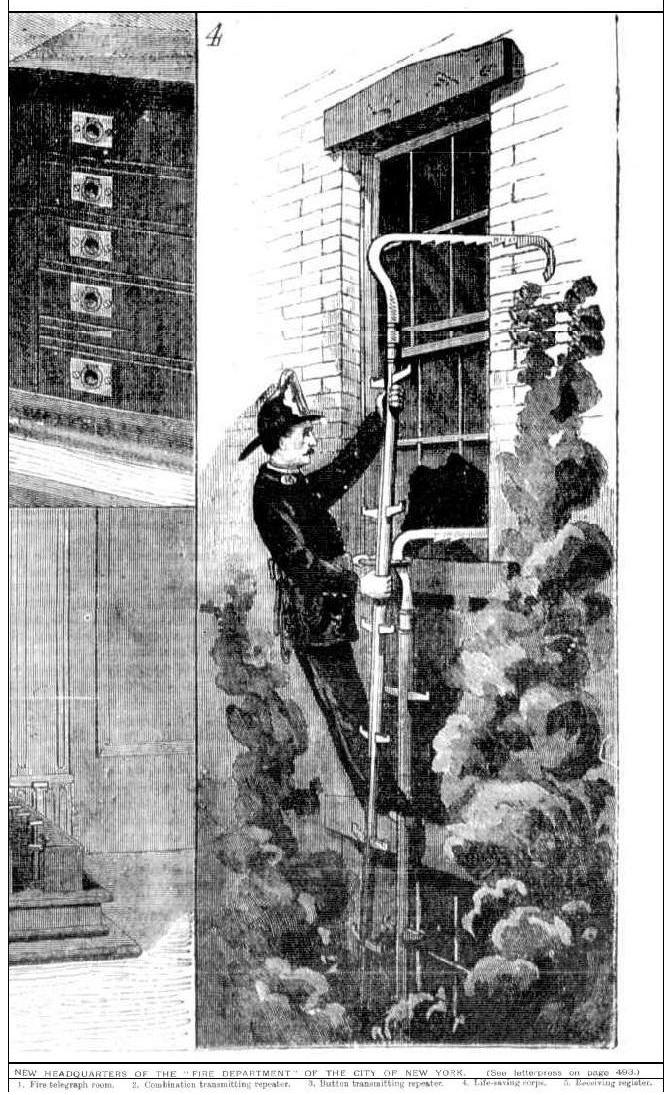
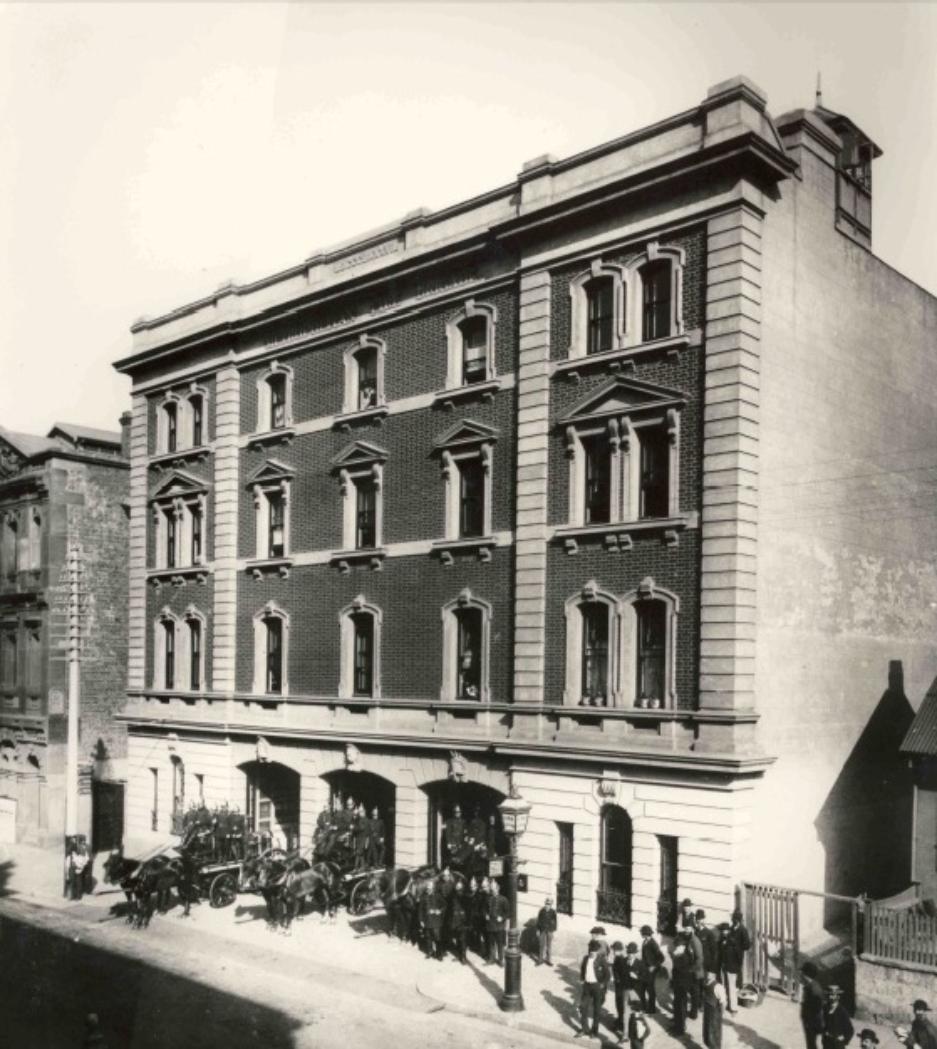
One of the earliest photographs of the completed Headquarters Fire Station, Sydney. This photo has been described as opening day, 1 March 1888, courtesy State Library of NSW.
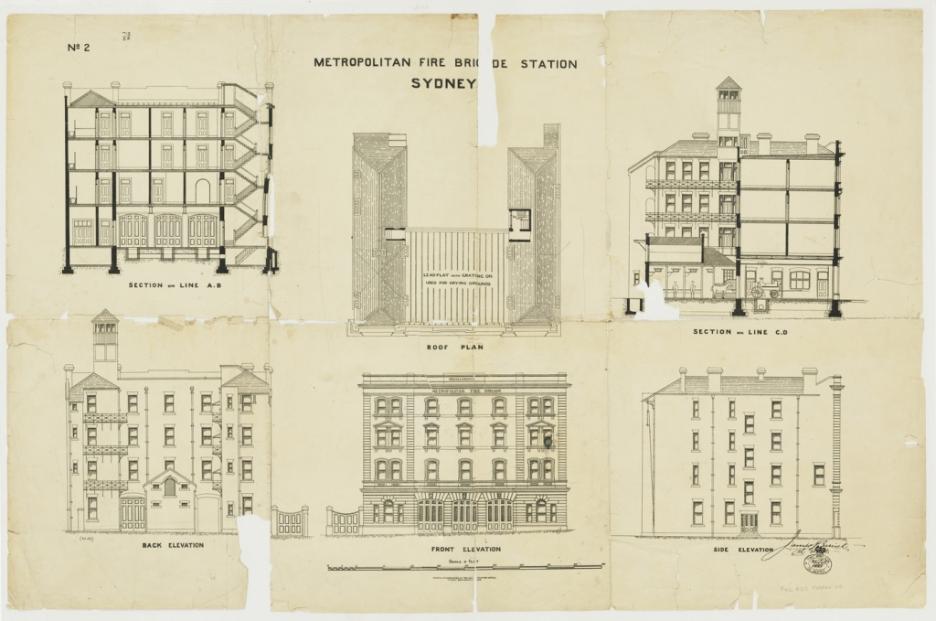
Metropolitan Fire Brigade Station, Sydney, 1888 / James Barnet, Public Works, N.S.W., Colonial Architect ; Plan of factory, Young St., Waterloo shewing new lavatories & fire escape / Spain & Cosh Architects, 1923. Album ID : 900353, courtesy State Library of NSW.
|
|
By A J Guesdon, 2013.